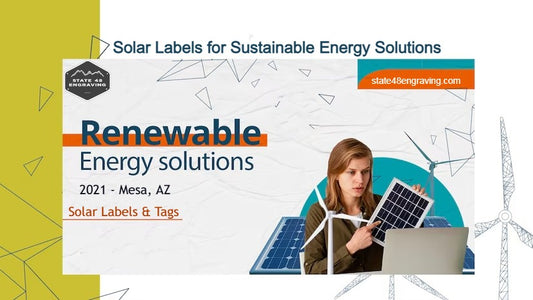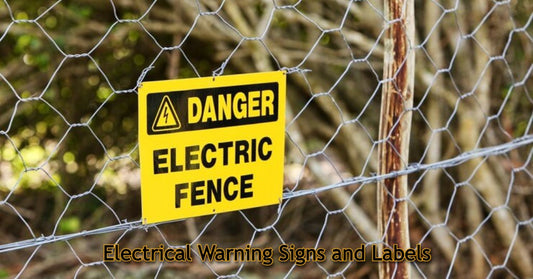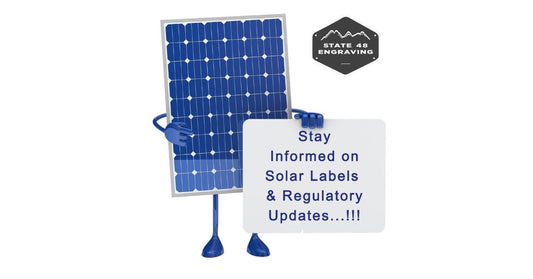In today's world, the pursuit of sustainable energy solutions is more critical than ever. As the effects of climate change become increasingly evident, the shift towards renewable energy sources like solar power is not just beneficial but essential. Solar labels play a crucial role in this transition, providing clear identification, safety information, and compliance with regulations. This article delves into the importance of solar labels, their various types, and how they contribute to sustainable energy solutions.
Understanding Solar Labels
Solar labels are specialized tags or decals used in solar energy systems to convey important information. These labels are designed to withstand harsh environmental conditions, including UV exposure, extreme temperatures, and moisture. They are typically made from durable materials such as polyester or vinyl and are printed with high-quality inks to ensure longevity and readability.
Types of Solar Labels
There are several types of solar labels, each serving a specific purpose in a solar energy system. Here are some of the most common types:
1. Identification Labels
Identification labels are used to mark different components of a solar energy system. These labels typically include information such as the manufacturer's name, model number, serial number, and installation date. Identification labels help in maintaining an accurate inventory of system components and assist in troubleshooting and maintenance.
2. Warning and Safety Labels
Safety is paramount in any energy system, and solar energy systems are no exception. Warning and safety labels provide critical information about potential hazards associated with the system. These labels often include warnings about high voltage, electric shock risks, and the presence of hazardous materials. By clearly communicating these risks, warning and safety labels help prevent accidents and ensure the safety of installers, maintenance personnel, and end-users.
3. Instructional Labels
Instructional labels provide step-by-step instructions for operating and maintaining solar energy systems. These labels may include information on how to shut down the system in an emergency, perform routine maintenance, or troubleshoot common issues. By providing clear and concise instructions, these labels ensure that the system is operated correctly and efficiently.
4. Compliance Labels
Compliance labels indicate that a solar energy system meets specific regulatory requirements and industry standards. These labels are essential for ensuring that the system is installed and operated in accordance with local, state, and federal regulations. Compliance labels often include certification marks from organizations such as Underwriters Laboratories (UL) or the International Electrotechnical Commission (IEC).
The Role of Solar Labels in Sustainable Energy Solutions
Solar labels play a vital role in promoting sustainable energy solutions. Here are some ways in which they contribute to the overall sustainability of solar energy systems:
Enhancing Safety
By providing clear and accurate information about potential hazards, solar labels help enhance the safety of solar energy systems. This not only protects the individuals who install and maintain these systems but also ensures that the systems operate safely over their lifespan. Improved safety leads to fewer accidents and incidents, reducing downtime and maintenance costs.
Facilitating Maintenance and Troubleshooting
Solar labels make it easier to identify and locate system components, which simplifies maintenance and troubleshooting processes. This is particularly important for large-scale solar installations, where numerous components need to be monitored and maintained regularly. Efficient maintenance and troubleshooting help extend the lifespan of solar energy systems, making them more sustainable in the long run.
Ensuring Regulatory Compliance
Compliance with regulations is crucial for the legal and safe operation of solar energy systems. Solar labels help ensure that systems meet all necessary regulatory requirements by providing clear information about certifications and standards. This not only helps avoid legal issues but also ensures that the systems operate efficiently and safely.
Promoting System Efficiency
Clear and accurate labeling helps ensure that solar energy systems are installed and operated correctly. Instructional labels provide essential information on system operation and maintenance, which helps optimize system performance. Efficient operation of solar energy systems maximizes energy output and reduces waste, contributing to the overall sustainability of the system.
Innovations in Solar Labeling
As the solar energy industry continues to evolve, so do the technologies and materials used in solar labeling. Recent innovations in solar labeling include:
1. Smart Labels
Smart labels incorporate technology such as QR codes or NFC (Near Field Communication) tags to provide more detailed information about solar energy systems. By scanning a QR code or tapping an NFC tag with a smartphone, users can access a wealth of information, including detailed installation instructions, maintenance logs, and performance data. Smart labels enhance the accessibility and usability of solar energy systems, making them more user-friendly and efficient.
2. Eco-Friendly Materials
In line with the principles of sustainability, there is a growing trend towards using eco-friendly materials in solar labels. These materials are designed to have a lower environmental impact throughout their lifecycle, from production to disposal. Examples include labels made from recycled materials or biodegradable substances. Using eco-friendly materials in solar labels aligns with the overall goal of promoting sustainable energy solutions.
3. Enhanced Durability
Advancements in materials science have led to the development of solar labels with enhanced durability. These labels are designed to withstand even harsher environmental conditions, ensuring that they remain legible and intact for longer periods. Enhanced durability is particularly important for solar installations in extreme environments, such as deserts or coastal areas, where labels are exposed to intense sunlight, wind, and saltwater.
Conclusion
Solar labels are an integral part of sustainable energy solutions, providing essential information that enhances the safety, efficiency, and compliance of solar energy systems. As the demand for renewable energy continues to grow, the importance of high-quality solar labels cannot be overstated. By incorporating innovations such as smart labels and eco-friendly materials, the solar industry can further promote sustainability and support the transition to a cleaner, greener energy future.




